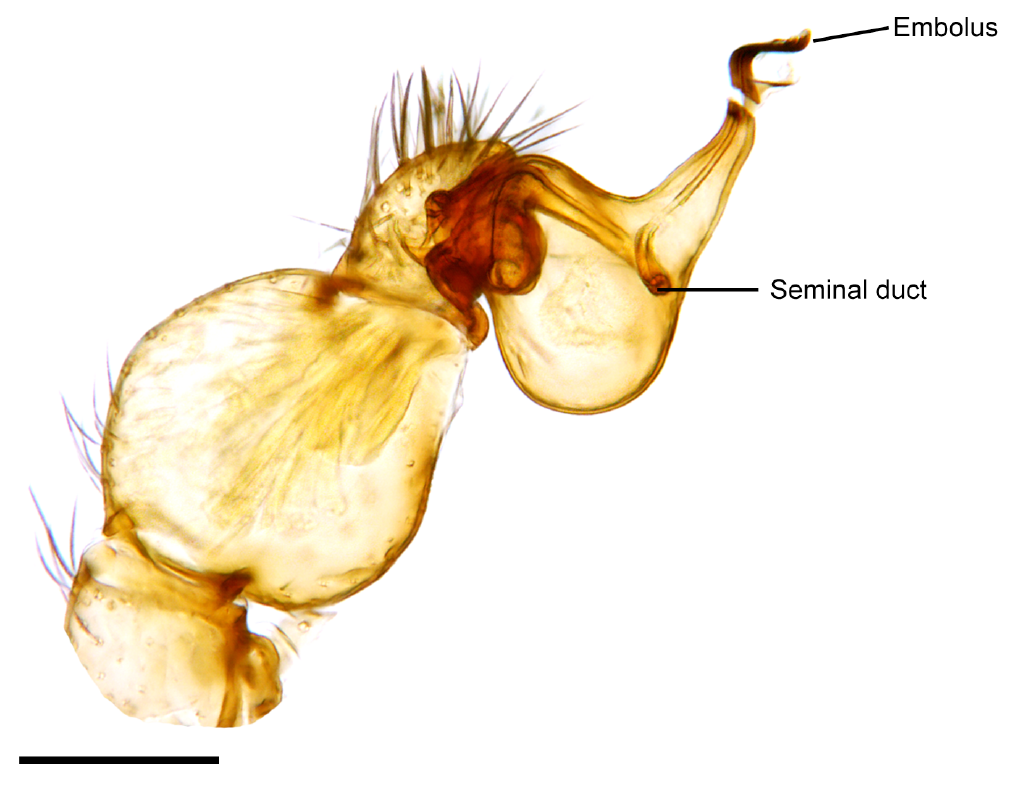|
Scrobipalpa Jariorum
''Scrobipalpa jariorum'' is a moth in the family Gelechiidae. It was described by Peter Huemer and Ole Karsholt in 2010. It is found in Bulgaria. Description The adult wingspan is . Its head is white with some brown mottling around the neck. Its labial palpi Pedipalps (commonly shortened to palps or palpi) are the second pair of appendages of chelicerates – a group of arthropods including spiders, scorpions, horseshoe crabs, and sea spiders. The pedipalps are lateral to the chelicerae ("jaws") and ... are white and each has two faint black rings. The antennae have rings of black and white. The hindwings are light grey. The forewings are white with scattered black scales. Range It has only been found in Bulgaria. References Scrobipalpa Moths described in 2010 {{Scrobipalpa-stub ... [...More Info...] [...Related Items...] OR: [Wikipedia] [Google] [Baidu] |
Moth
Moths are a paraphyletic group of insects that includes all members of the order Lepidoptera that are not butterflies, with moths making up the vast majority of the order. There are thought to be approximately 160,000 species of moth, many of which have yet to be described. Most species of moth are nocturnal, but there are also crepuscular and diurnal species. Differences between butterflies and moths While the butterflies form a monophyletic group, the moths, comprising the rest of the Lepidoptera, do not. Many attempts have been made to group the superfamilies of the Lepidoptera into natural groups, most of which fail because one of the two groups is not monophyletic: Microlepidoptera and Macrolepidoptera, Heterocera and Rhopalocera, Jugatae and Frenatae, Monotrysia and Ditrysia.Scoble, MJ 1995. The Lepidoptera: Form, function and diversity. Oxford, UK: Oxford University Press; 404 p. Although the rules for distinguishing moths from butterflies are not well est ... [...More Info...] [...Related Items...] OR: [Wikipedia] [Google] [Baidu] |
Gelechiidae
The Gelechiidae are a family of moths commonly referred to as twirler moths or gelechiid moths. They are the namesake family of the huge and little-studied superfamily Gelechioidea, and the family's taxonomy has been subject to considerable dispute. These are generally very small moths with narrow, fringed wings. The larvae of most species feed internally on various parts of their host plants, sometimes causing galls. Douglas-fir (''Pseudotsuga'') is a host plant common to many species of the family, particularly of the genus '' Chionodes'', which as a result is more diverse in North America than usual for Gelechioidea. By the late 20th century, over 900 genera with altogether more than 4,500 species were placed here, with about 650 genera known from North America alone. While these figures are certainly outdated, due to the many revisions to superfamily Gelechioidea and new descriptions of twirler moths, they still serve to show the enormous biodiversity contained in this ... [...More Info...] [...Related Items...] OR: [Wikipedia] [Google] [Baidu] |
Bulgaria
Bulgaria (; bg, България, Bǎlgariya), officially the Republic of Bulgaria,, ) is a country in Southeast Europe. It is situated on the eastern flank of the Balkans, and is bordered by Romania to the north, Serbia and North Macedonia to the west, Greece and Turkey to the south, and the Black Sea to the east. Bulgaria covers a territory of , and is the sixteenth-largest country in Europe. Sofia is the nation's capital and largest city; other major cities are Plovdiv, Varna and Burgas. One of the earliest societies in the lands of modern-day Bulgaria was the Neolithic Karanovo culture, which dates back to 6,500 BC. In the 6th to 3rd century BC the region was a battleground for ancient Thracians, Persians, Celts and Macedonians; stability came when the Roman Empire conquered the region in AD 45. After the Roman state splintered, tribal invasions in the region resumed. Around the 6th century, these territories were settled by the early Slavs. The Bulg ... [...More Info...] [...Related Items...] OR: [Wikipedia] [Google] [Baidu] |
Palpi
Pedipalps (commonly shortened to palps or palpi) are the second pair of appendages of chelicerates – a group of arthropods including spiders, scorpions, horseshoe crabs, and sea spiders. The pedipalps are lateral to the chelicerae ("jaws") and anterior to the first pair of walking legs. Overview Pedipalps are composed of six segments or articles: the coxa, the trochanter, the femur, the short patella, the tibia, and the tarsus. In spiders, the coxae frequently have extensions called maxillae or gnathobases, which function as mouth parts with or without some contribution from the coxae of the anterior legs. The limbs themselves may be simple tactile organs outwardly resembling the legs, as in spiders, or chelate weapons ( pincers) of great size, as in scorpions. The pedipalps of Solifugae are covered in setae, but have not been studied in detail. Comparative studies of pedipalpal morphology may suggest that leg-like pedipalps are primitive in arachnids. At present, the only ... [...More Info...] [...Related Items...] OR: [Wikipedia] [Google] [Baidu] |
Scrobipalpa
''Scrobipalpa'' is a genus of moths in the family Gelechiidae. ''Euscrobipalpa'' has sometimes been treated as a distinct subgenus, or even as a full genus, but is generally no longer recognised as valid, following Ponomarenko & Park (2007).Ponomarenko, M.; Park, K.-T. 2007: Two new species and a new record of Gelechiidae (Lepidoptera) from Korea. ''Zootaxa'', (1437): 55-60Abstract & excerpt ee p. 59/ref> Species *'' Scrobipalpa abai'' Povolný, 1977 *'' Scrobipalpa abstrusa'' Huemer & Karsholt, 2010 *'' Scrobipalpa acuminatella'' (Sircom, 1850) *'' Scrobipalpa acuta'' (Povolný, 2001) *'' Scrobipalpa adaptata'' (Povolný, 2001) *'' Scrobipalpa admirabilis'' Bidzilya, 2021 *'' Scrobipalpa aestivans'' Falkovitsh & Bidzilya, 2003 *'' Scrobipalpa afromontana'' Bidzilya, 2021 *'' Scrobipalpa aganophthalma'' (Meyrick, 1931) *'' Scrobipalpa agassizi'' Bidzilya, 2021 *'' Scrobipalpa ahasver'' Povolný, 1969 *'' Scrobipalpa albofusca'' Povolný, 1971 *'' Scrobipalpa albostriata'' Povoln ... [...More Info...] [...Related Items...] OR: [Wikipedia] [Google] [Baidu] |


